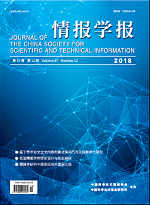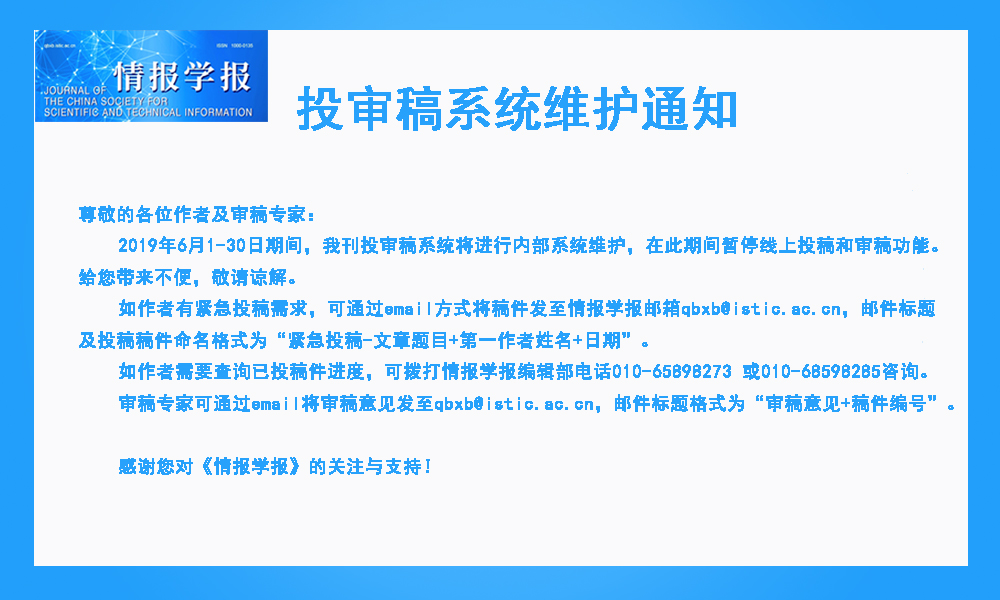 |
|
2018 Vol. 37, No. 12
Published: 2018-12-28 |
|
|
| |
|
|
|
|
|
1193 |
Methods of Extracting Non-Categorical Semantic Relations between Chinese Terms |
|
 |
Zhu Hui, Wang Hao, Su Xinning, Deng Sanhong |
|
|
DOI: 10.3772/j.issn.1000-0135.2018.12.003 |
|
|
Ontology is an effective method of knowledge organization, and it is also the important link in constructing the Semantic Web. The non-categorical semantic relations between concepts are important parts of ontology. Because the term is the external expression of a concept, this paper introduces co-occurrence, structural analysis, template construction, logical reasoning, and other methods to construct a model that can extract non-categorical semantic relations between terms from Chinese unstructured texts. The model extracts the relations from two different perspectives: content and structure. The paper puts forward the main operation flow of the model and the main components of each functional module, discusses the specific realization of the main components, and discusses the limitations of the methods. The research will provide new ideas for the extraction of non-categorical semantic relations between terms, enrich the methods of knowledge discovery, and provide references for the implementation of feasible and effective knowledge organization. |
|
|
2018 Vol. 37 (12): 1193-1203
[Abstract]
(
257
)
HTML
(1 KB)
PDF
(694 KB)
(
896
) |
|
|
|
1204 |
Part-of-Speech Automated Annotation of Food Safety Events Based on BiLSTM-CRF |
|
 |
Xu Fei, Ye Wenhao, Song Yinghua |
|
|
DOI: 10.3772/j.issn.1000-0135.2018.12.004 |
|
|
The accuracy and recall rate of part-of-speech annotation directly affects the overall effect of knowledge and strategy mining of subsequent food-safety incidents, which not only directly affects the performance of term and entity extraction in food-safety events, but also, to some extent, determines the accuracy of classification, clustering, and association knowledge mining related to food-safety events. The experiment of part-of-speech annotation is conducted based on traditional machine learning and deep learning models, such as CRF, RNN BiLSTM, and BiLSTM- CRF. The result of forty groups of experiments shows that the annotation F-scores of the deep learning models is higher than those of the CRF, among which, the average F-score of RNN and BiLSTM is 2.43% and 3.93% higher, respectively. The overall performance of BiLSTM-CRF, which systemically integrates the optimal characteristics of both BiLSTM and CRF, reaches the best level, in which the F-score is 7.12% higher than that of BiLSTM and the F-score of the best model is 95.89%. |
|
|
2018 Vol. 37 (12): 1204-1211
[Abstract]
(
258
)
HTML
(1 KB)
PDF
(425 KB)
(
1172
) |
|
|
|
1212 |
Effects of Intelligent Situation, Learning Acuity, and Smart Service: Empirical Analysis of 97 Librarians of “Double First-Rate” Universities |
|
 |
Zhang Qingpu, Chen Mang, Hou Zhiping |
|
|
DOI: 10.3772/j.issn.1000-0135.2018.12.005 |
|
|
The rapid popularization of advanced information technology and intelligent situations has brought new opportunities for the development of smart services in university libraries. However, the willingness of librarians to innovate and provide efficient intelligent services is the key issue affecting the effectiveness of smart services. Based on systems theory and the technology adoption model (TAM), this paper constructs a model that considers librarians’ willingness to innovate and smart service behavior, from the perspective of learning acuity (intrinsic motivation) and intelligence situation (exterior situation). This paper explores the relationship between the intelligence situation, learning acuity, and smart service, and as well as the path of action and the mechanism of influence. Then, through empirical analysis of 97 librarians of “double first-rate” universities, this paper verifies the research hypothesis and conceptual model. The results showed that the learning acuity and the intelligence situation are the key factors that have a significant positive impact on librarians' intelligent service behavior and willingness to innovate. The librarians' willingness to innovate in service is an important intermediate variable for intelligent situations, learning acuity, and smart services. Finally, based on the research results, this paper puts forward corresponding suggestions and strategies for service innovation and management of the university library’s smart service. |
|
|
2018 Vol. 37 (12): 1212-1223
[Abstract]
(
231
)
HTML
(1 KB)
PDF
(589 KB)
(
1214
) |
|
|
|
1224 |
Research Focus of Three Northeast Provinces Based on Scientific Knowledge Map |
|
 |
Chen Xiaoling, Liu Dongliang |
|
|
DOI: 10.3772/j.issn.1000-0135.2018.12.006 |
|
|
The aim of this work is to detect the research focus and disciplinary trend of the northeast provinces in the past 5 years by the visual analysis tool CiteSpace. This study is based on the original data of 8535 articles published in Jilin, Heilongjiang, and Liaoning province in the Web of Science database during 2012-2016. First, the number of published papers and highly cited documents per year was measured. Second, CiteSpace software was used to analyze co-institutional, keyword co-word analysis, and disciplinary co-occurrence. The number of published papers in the northeast provinces has been on the rise. The core institutions are Jilin University, the Chinese Academy of Sciences, and China Medical University. In the field of chemistry, medicine, and engineering, they have achieved fruitful research results. |
|
|
2018 Vol. 37 (12): 1224-1231
[Abstract]
(
281
)
HTML
(1 KB)
PDF
(1078 KB)
(
1148
) |
|
|
|
1241 |
Research on Sentiment Evaluation of Online Public Opinion Based on the Bayesian Model in a Mobile Environment: The Case of “China Women’s Volleyball Won the Championship in the Rio Olympics” in SinaWeibo |
|
 |
Wang Xiwei, Zhang Liu, Wen Qing, Wang Nan’axue |
|
|
DOI: 10.3772/j.issn.1000-0135.2018.12.008 |
|
|
It is extremely important to understand and master the evolution rules of the emotional evolution of online public opinion forum users and to build an emotional evolution model within the mobile environment. It is also important for the relevant departments to strengthen the supervision of online public opinion information within the mobile environment and to guide the trends of online public opinion correctly. On the basis of the naive Bayes model, this paper uses training of word vectors, text preprocessing, and performance evaluation to process emotional evolution. Using the three visual dimensions of word frequency, region, and time, we constructed an emotional analysis model of users' online public opinion comments within a mobile environment, and, as an example, we used the sinaWeibo “China Women’s Volleyball Won the Championship in the Rio Olympics” topic to visualize and analyze the process of emotional evolution. The emotional analysis model constructed in this paper can be effectively applied to research on the emotional evolution of online public opinion users within the mobile environment. The empirical results demonstrate that Sina micro-blog users mainly applied positive emotions to the “China Women’s Volleyball Won the Championship in the Rio Olympics” topic. Developed areas, such as the municipalities directly under the central government and the coastal provinces, compared to the southwest, the less developed provinces in Northeast China and other less developed provinces, were more optimistic about the topic. |
|
|
2018 Vol. 37 (12): 1241-1248
[Abstract]
(
280
)
HTML
(1 KB)
PDF
(1032 KB)
(
1504
) |
|
|
|


